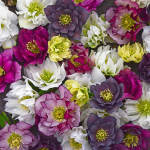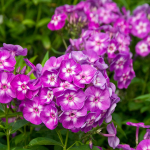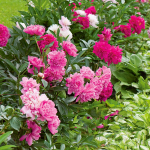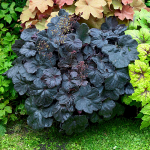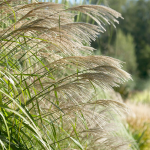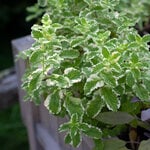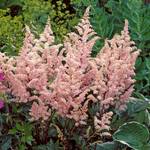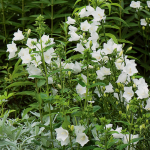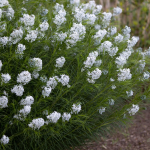Product Details
Even in a group of bulbs noted for yielding large flowers, vigorous growth, and sweet perfume, Lilium 'Casa Blanca' is a standout. The huge flowers are pure, gleaming white, delicately flocked in a way that adds richness and texture. When this Lily blooms in our Moon Garden, our staff find excuses to wander nearby, while visitors stand transfixed, lost in the perfume and admiring the hawkmoths that hover over the blooms day and evening. Adjectives like "astonishing" and "ravishing" may seem like catalog hyperbole, until you actually see one of these Lilies in bloom. Then words fail. 'Casa Blanca' is widely regarded by horticultural professionals as the best white Oriental Lily ever.
Lilies are one of the truly great garden plants. Their beauty, diversity, extended season of bloom, exquisite fragrance, graceful stature, and reliable disposition reflect the fruits of hundreds of years of selective breeding. Your garden should not be without them, whether you manage acres of mixed borders or a few pots on a city balcony.
Lilies prefer cool soil, which argues for shade at their feet from low-growing companions such as Ferns, Geraniums, or Hellebores. Plant Lilies in well-drained soil where they will receive 6–8 hours of sun a day. Delicate and graceful Species Lilies carry their flowers on candelebra-shaped stems and are generally more tolerant of shade. When cutting the flowers for bouquets, remove no more than 1/3 of the stem. This provides sufficient leaves on the remaining stem to renew the bulb for the coming year.
For more information on growing Lilium, click on Growing Guide.
Shipping
HOW PLANTS ARE SHIPPED
The size of the plants we ship has been selected to reduce the shock of transplanting. For some, this means a large, bareroot crown. Others cannot travel bareroot or transplant best if grown in containers. We ship these perennials and annuals in 1 pint pots, except as noted. We must point out that many perennials will not bloom the first year after planting, but will the following year, amply rewarding your patience. We ship bulbs as dormant, bare bulbs, sometimes with some wood shavings or moss. Shrubs, Roses, vines, and other woody plants may be shipped bareroot or in pots. The size of the pot is noted in the quick facts for each item.
WHEN WE SHIP
We ship our bulbs and plants at the right time for planting in your area, except as noted, with orders dispatched on a first-come, first-served basis by climate zone. We also ship a wide range of containers and planters, tools, supplies, fertilizers, garden wear, garden decor items, as well as indoor decorations like wreaths and dried bouquets when available. Estimated dates for shipping are indicated in the green Shipping Details box for each item. Please supply a street address for delivery. Kindly contact us with two weeks notice, if you'll be away at the expected time of delivery.
OUR GUARANTEE
We guarantee to ship plants that are in prime condition for growing. If your order is damaged or fails to meet your expectations, we will cheerfully replace or refund it. Please contact our Customer Service Department at 1-800-503-9624 or email us at [email protected]. Please include your order number or customer number when contacting us.
Reviews
Average Customer Rating:
 (29 Reviews)
Write a Review
(29 Reviews)
Write a Review
Sort by:
Casa Blanca Lilies 
A viewer from Connecticut
1 of 1 people found this review helpful. Do you? yes no Certified buyer
Casa Blanca liliums vs pesky four footed critters 
A viewer from Plymouth Michigan USA
(Have used Plantskyyd granules and spray successfully on other plants, including tulips…..)
Thank you!
et
3 of 3 people found this review helpful. Do you? yes no Certified buyer
much larger than expected 
A viewer from NY
While I am pleased to learn these lilies grew and bloomed well for you, I am sorry to learn you were not pleased with their overall performance because they were too tall. As all of our products are guaranteed for full satisfaction, I will be contacting you directly via email regarding compensation.
Sincerely,
Cathy
19 of 22 people found this review helpful. Do you? yes no Certified buyer
A Favorite 
A viewer from MA
29 of 29 people found this review helpful. Do you? yes no Certified buyer
Growing guide
Latin Name Pronunciation: lil'ee-um
Bulb size: 18-20 cm
Lilies produce spectacular trumpet-shaped flowers atop strong stems that arise from bulbs made up of scale-like segments. Heights vary according to variety, ranging from 2 feet to 6 feet or so. All are elegant in the perennial border and shorter varieties may be successfully grown in pots. Those types close to the species are lovely for naturalizing. Lilies are indispensable for cutting, and a single stem in a vase makes a classic statement; remove stamens to avoid contact with the pollen, which may cause stubborn stains. Plant in an area sheltered from strong winds, and plan on staking the taller types.
Light/Watering: Most of today's Lilies prefer full sun but will flower in partial shade, which may also help the blooms retain their color. Some of the species Lilies and their kin prefer afternoon shade, and require it in the hottest climates. Lilies thrive with regular watering, especially during periods of summer drought.
Fertilizer/Soil and pH: Lily bulbs will not survive if soils are poorly drained, especially in the winter months. Some will form roots along the buried stems and will appreciate a side dressing of organic matter, and all will benefit from a summer mulch to keep roots cool. Light, loamy soils that are well drained and have a pH right around 6.0 are ideal. Plant top of Lily bulb 6-8" deep or three times as deep as the bulb is high, except for L. candidum and its cultivars, which should only be covered with an inch of soil. Feed in early spring as growth emerges and again just as the flowers open. If a soil test indicates a low level of potassium, supplement with muriate of potash or a fertilizer high in this nutrient for optimum bulb and root growth.
Pests/Diseases: Gardeners in the Northeast must be on the lookout for a relatively new pest called the Lily leaf beetle, which feeds on Lily foliage, buds, and flowers in both its larval and adult form. Luckily, both life stages are easily recognized: the adult is slightly less than half-an-inch long, with a brilliant scarlet body and black head and appendages. The larvae look a bit like lumpy slugs but are orange, brown, or greenish yellow with black heads; they pile their black excrement on their backs as they feed. From March through June, look on the undersides of the leaves for the orange eggs and destroy them. Handpicking works if only a few plants are present; for a larger planting, Neem products are effective for young larvae and will deter adults, and insecticides containing spinosad will control the insect (but avoid using these when bees are active). Occasionally, aphids will infect Lilies with Lily mosaic virus, which results in yellow streaking or mottling of the leaves; this virus is mainly problematic in the species. Watch for aphids and rinse off with a forceful water spray.
Companions: Lilies do very well in the company of shallow-rooted plants, which also help to keep their roots cool. They are especially lovely rising from a bed of deep green Ferns , and many varieties flower at the same time as Roses, Peonies and Clematis.
Reflowering: Remove flowers as they fade to avoid the formation of seedpods (this directs energy back to the bulb, rather than to seeds). When all flowers have passed, cut the stem directly below the blooms, so that as much foliage is left as possible to feed the bulb. Also, when cutting flowers for the house keep the stems as short as possible for the same reason.
Dividing/Transplanting: Lily bulbs go dormant in late fall, and that is the best time to move or divide the clumps. Handle the fleshy bulbs carefully, and replant at the same depth in well-drained, friable soil. If smaller offset bulbs are present, replant these at a depth three times their height.
End of Season Care: After foliage has died back, cut stems off at ground level, or leave a few inches so you know where they are if you have fall or spring planting to do. Remove all old foliage from the garden.
Calendar of Care
Early Spring: Apply a light application of balanced fertilizer or side-dress with compost and organic amendments when new growth appears. Check potassium levels in the soil if plants appear weak. Water well if it is unseasonably dry, as plants prefer evenly moist soil.
Mid-Spring: In the Northeast, watch for Lily leaf beetle activity. From March through June look beneath the foliage for the orange or red eggs and destroy. If it is impossible to handpick the larvae and bright red adults, treat with Neem products or those containing spinosad. Watch for aphid infestations; wash off with a forceful water spray or spray with insecticidal soap. Mulch plants as soil warms to buffer soil moisture and temperature.
Late Spring: Taller forms may need staking.
Summer: Water Lilies well during dry spells. Remove flowers as they fade and when blooming is finished cut the stem right below the last bloom to leave as much foliage on the plant as possible.
Fall: Cut foliage back and remove from the garden. Clumps of Lilies may be divided or transplanted after foliage dies back in late fall.


